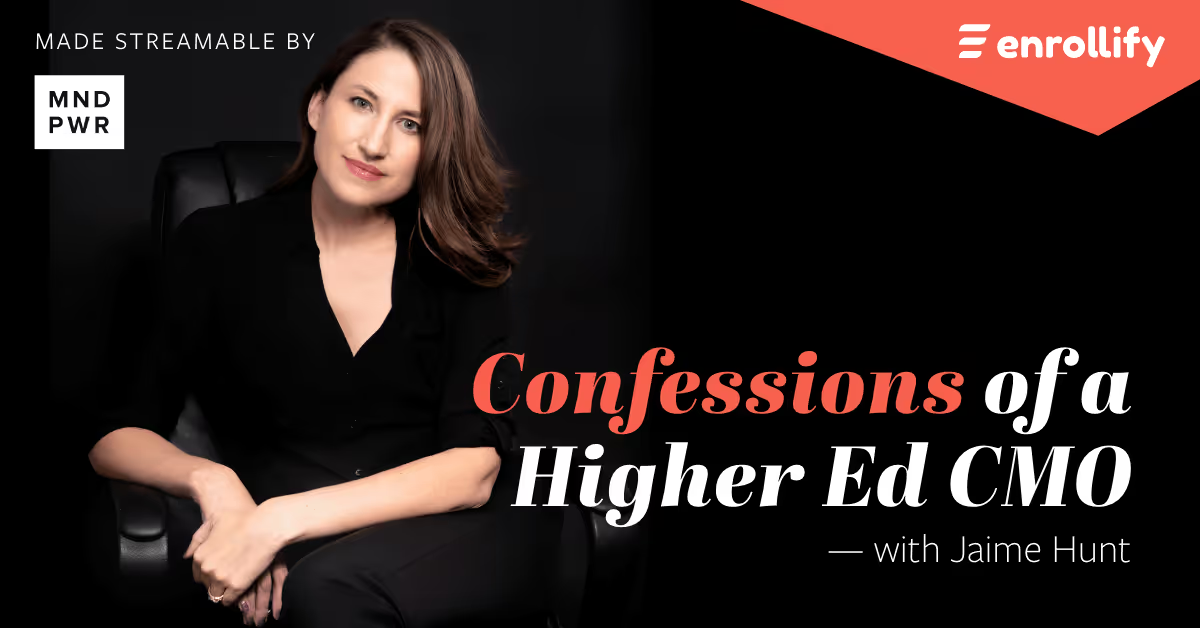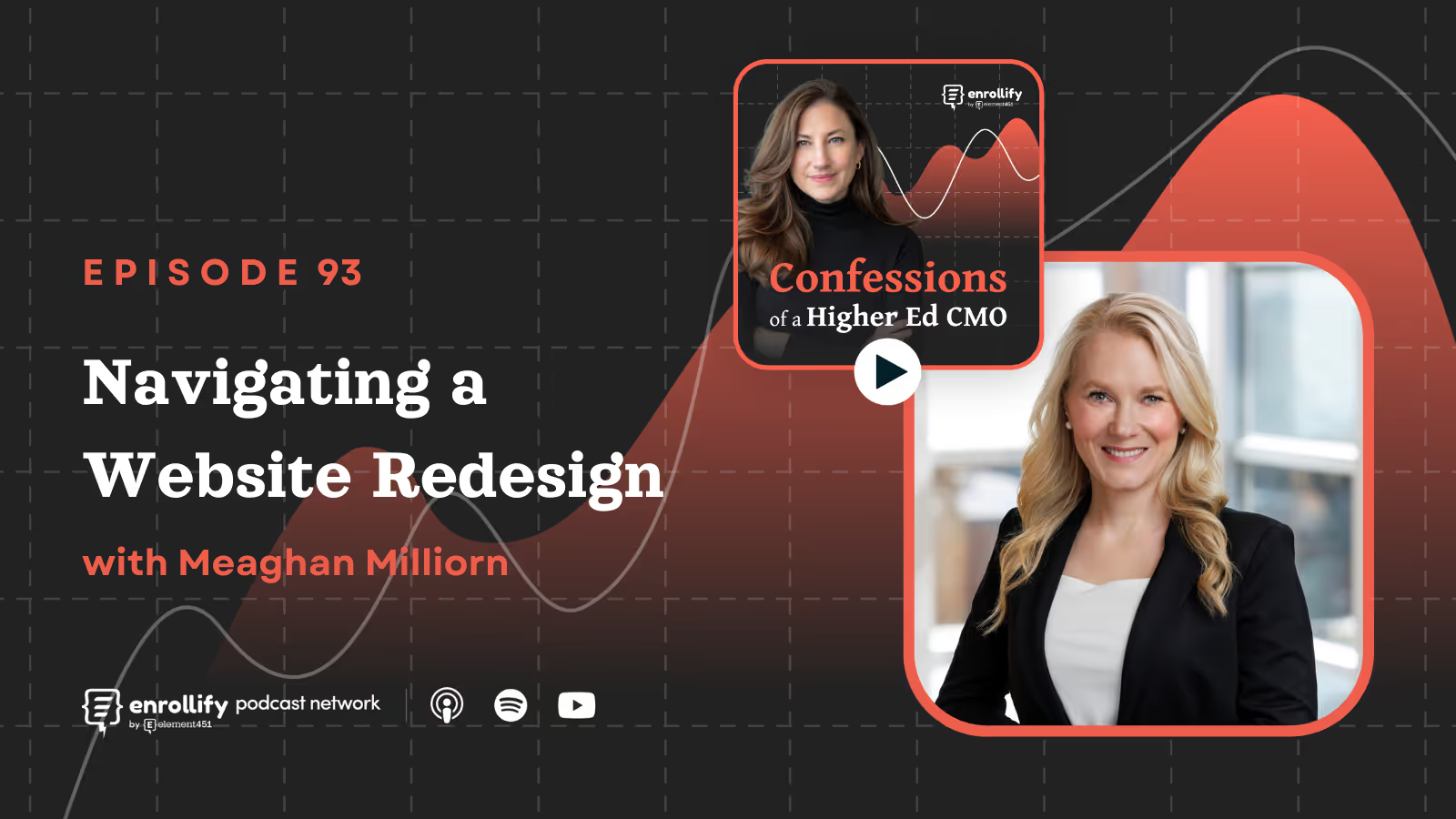About the Episode
In this episode, Jaime talks with Christy Jackson, one of the foremost experts in crisis communications in higher education. In her higher education career, Christy has served in communications roles at Virginia Tech during the April 16 tragedy that killed 32; at Radford University when a student drove to Virginia Tech and killed a police officer; and at UNC Charlotte when an active shooter entered a classroom and killed two students. She was also the chief communications officer when Sweet Briar College announced its intention to close. Added to the mix are countless reputational issues, severe weather events, and deaths on- and off-campus.
Meanwhile, Jaime has navigated an on-campus homicide at Winston-Salem State during Homecoming; several off-campus student homicides – including one on the Wake Forest University campus; the terminations of high-profile employees; a residence hall carbon monoxide leak; a 100-year flood; faculty unionization efforts; and many other crises and issues she wishes she could forget.
In this episode, Christy and Jaime get real about what they have learned as they have responded to both life-safety crises and longer-term reputational issues. Takeaways include:
- A behind-the-scenes look at some of the scenarios Christy and Jaime have faced that led to worldwide headlines
- Insights into the lessons learned
- Observations on the most common mistakes made
- Guiding principles for crisis communications
- Ways universities can mitigate reputational damage during a crisis situation
- Tips for putting together a solid crisis communications plan and training for your team
Meet Christy Jackson: A Crisis Communication Veteran
Christy Jackson has spent her entire career in higher education, beginning at Virginia Tech and spanning roles at Radford University, Sweet Briar College, and UNC Charlotte. Along the way, she’s faced some of the most complex crises higher ed professionals can encounter. These include the 2007 Virginia Tech shooting, a student-involved shooting at Radford, the attempted closure of Sweet Briar College, and the 2019 shooting at UNC Charlotte.
Each experience has deepened her expertise in managing life-threatening crises, reputational challenges, and long-term recovery. Despite the emotional toll, Christy’s dedication to higher education and her belief in its transformative power keep her in the profession, ready to help her institution weather any storm.
How to Stay Calm in a Crisis
Christy emphasizes the importance of compartmentalization during crises. Communicators often have to “run toward the storm” and make sense of chaos for their communities. This mindset helps maintain focus, especially during life-threatening situations where emotions can run high.
For example, during the 2019 UNC Charlotte shooting, Christy was in a classroom with students when the campus went into lockdown. Despite the fear and uncertainty, she shifted into action mode—providing reassurance to students, coordinating communication efforts, and setting a calm tone. This laser focus on the job at hand is key to navigating high-pressure moments.
Lessons Learned from Life-Safety Crises
One of the most important principles in a crisis, Christy explains, is putting the audience’s needs first. She describes how crucial it is to meet their expectations with timely, actionable information, especially in life-safety scenarios.
For example, during the UNC Charlotte shooting, her team sent frequent updates to let the campus community know what actions to take and when more information would follow. Even if the updates simply reassured people that nothing had changed, it helped alleviate confusion and fear.
Christy also stresses the value of long-term recovery efforts. Following a crisis, institutions must balance emotional care for their community with operational recovery, such as addressing safety concerns and rebuilding trust with prospective students and families.
Preparing for the Next Crisis: Building Credibility and Plans
For higher ed communicators looking to prepare for potential crises, Christy offers the following advice:
- Conduct research: Ask your audiences how they perceive your communication efforts, both in emergencies and during day-to-day operations. Use their feedback to identify gaps and improve processes.
- Create a tailored crisis plan: Every institution is unique, so your crisis communication plan should reflect the specific needs, audiences, and challenges of your campus.
- Practice regularly: Rehearse your crisis plan to build “muscle memory” among team members. Simulations can reveal weaknesses and improve your team’s readiness.
- Establish clear roles: Define each person’s responsibilities in a crisis and ensure there are backups for every role. This eliminates uncertainty and ensures smoother operations during emergencies.
- Build trust early: Regular, transparent communication before a crisis is key. For example, UNC Charlotte’s “Niner Notices” system—developed in response to audience feedback—provides updates on non-threatening incidents, helping to build credibility with the campus community.
Avoiding Common Mistakes in Crisis Management
Christy identifies two common pitfalls in higher ed crisis management:
- Underestimating the scope of a crisis: Some institutions fail to recognize how serious an issue might become, especially with the speed of social media. Ignoring a brewing issue or delaying action can exacerbate the situation.
- Overestimating what communication can achieve: While clear messaging is essential, it can’t fix underlying issues. Actions must align with words to rebuild trust and resolve the crisis effectively.
She also highlights the importance of distinguishing between crises and issues. Not everything that sparks public attention requires a full-scale crisis response. By addressing issues proactively, institutions can often prevent them from escalating into crises.
The Role of Leadership in a Crisis
Strong leadership is critical during a crisis, and Christy has been fortunate to work with leaders who understood this. She shares how former UNC Charlotte Chancellor Phil Dubois established a guiding principle in the wake of the 2019 shooting: prioritize care for the victims’ families, survivors, and the campus community above all else.
This clear and compassionate approach helped unify the institution’s response and maintain trust with its audiences. Christy notes that authentic leadership, combined with a strong crisis plan, can make all the difference in how an institution navigates and recovers from a crisis.
About Confessions of a Higher Ed CMO
Confessions of a Higher Ed CMO is sponsored by our friends at Mindpower- a full-service marketing and branding firm celebrating nearly thirty years of needle-moving, thought-provoking, research-fueled creative and strategy. Mindpower is women-founded and owned, WBENC certified, nationally recognized, and serves the social sector – higher education, healthcare, non-profits, and more. The Mindpower team is made up of strategists, storytellers, and experience creators. From market research to brand campaigns to recruitment to fundraising, the agency exists to empower clients, amplify brands, and help institutions find a strategic way forward. Learn more about Mindpower here!
Confessions of a Higher Ed CMO is a part of the Enrollify Podcast Network. If you like this podcast, chances are you’ll like other Enrollify shows too!
Our podcast network is growing by the month and we’ve got a plethora of marketing, admissions, and higher ed technology shows that are jam packed with stories, ideas, and frameworks all designed to empower you to be a better higher ed professional. Our shows feature a selection of the industry’s best as your hosts. Learn from Mickey Baines, Zach Busekrus, Jeremy Tiers, Corynn Myers, Jaime Gleason and many more.
Learn more about The Enrollify Podcast Network at podcasts.enrollify.org. Our shows help higher ed marketers and admissions professionals find their next big idea — come and find yours!















